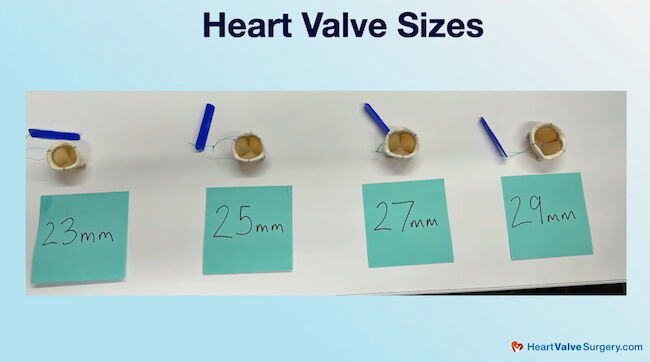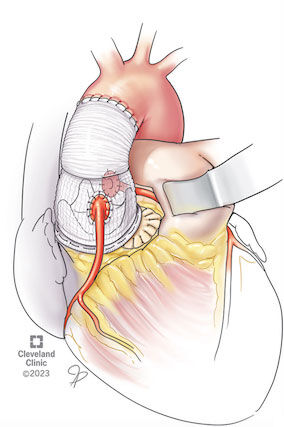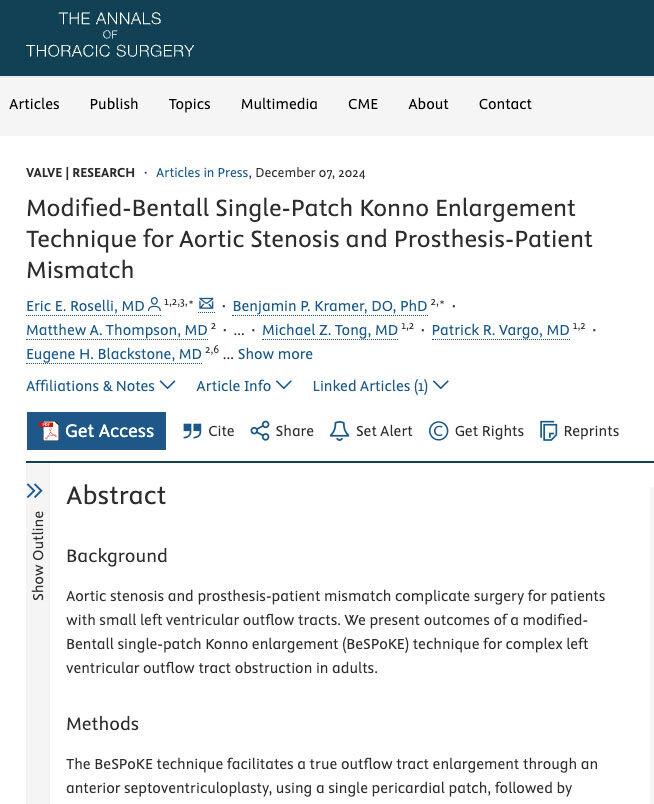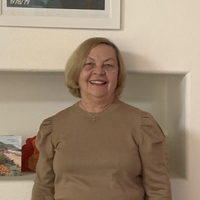Cardiac Innovation: BeSPoKE Procedure for Patient Prosthesis Mismatch
Written By: Allison DeMajistre, BSN, RN, CCRN
Medical Expert: Eric Roselli, MD, Chief of Adult Cardiac Surgery, Cleveland Clinic, Cleveland, Ohio
Reviewed By: Adam Pick, Patient Advocate, Author & Website Founder
Page Last Updated: June 2, 2025
Getting the right-sized valve is imperative for achieving successful outcomes after aortic valve replacement. For that reason, cardiac surgeons go to great lengths to match the patient’s size with the valve they plan to use for replacement. In many cases, implanting the largest size possible aims to achieve better valve efficiency and make a future TAVR valve-in-valve re-replacement possible. Unfortunately, the replacement valve is sometimes too small, resulting in patient prosthesis mismatch, creating complications like higher pressures and increased workload on the heart.
We receive a lot of questions from patients in our community about patient prosthesis mismatch, especially since many of them are anticipating a second operation for re-replacement. We were thrilled to have Dr. Eric Roselli join us to share his insights about he approaches patient prosthesis mismatch with the BeSPoKE procedure, a new innovative technique. Dr. Roselli is the Chief of Cardiac Surgery at the Cleveland Clinic in Cleveland, Ohio, and the primary author of a recently published study on the BeSPoKE Procedure.
About Patient Prosthesis Mismatch and the BeSPoKE Procedure
Here are the key insights shared by Dr. Roselli:
- A good match is essential. “I think people get it,” said Dr. Roselli. “You have a stenotic valve, and they give you a new one that opens it up. But, when we put a valve in somebody, there’s a little bit of hardware in there, and it takes up space. For some people, that space is already small. And so, there has to be a good match, and that’s where this whole mismatch thing comes in.”
- Sometimes, the valve wears out or is just too small. “Sometimes the valve sort of fits,” said Dr. Roselli. “The opening may work for a while, but it will take a beating if it’s on the smaller side. It might take up just enough space for the heart to struggle, which can become a serious problem for someone. So, you go in with aortic stenosis, get your valve replaced, feel pretty good for a while, and then the valve can wear out fast, or just never was big enough.”

- Surgeons are getting better at addressing potential mismatch. “Fortunately, now there’s a much greater appreciation for this, especially in active young patients,” explained Dr. Roselli. “It’s important to get a bigger valve, and I think surgeons are doing this. Surgeons are doing things like annular enlargements, so we do that. The space is small, and we don’t want to put a small valve in someone who’s avoided this mismatch. We’ll make that space bigger, and there are a lot of techniques to use. There is a hands-on course here at the STS where surgeons can share their techniques, so I think surgeons are getting better about that.”
- What is the BeSPoKE Procedure? “We just published a novel technique for the most severe prosthesis mismatch situations,” said Dr. Roselli. “Something we call a BeSPoKE Procedure. It’s a combination of a root replacement and a Konno Procedure, where we not only split that opening in the back to make a little more room, but we blow the whole space open. We cut into the muscle or into the right and left ventricle and reconstruct that area. It’s a technique modified from some used in kids with congenital heart disease that we now apply in adults. We’ve had great results in those patients.”
 BeSPoKE Procedure
BeSPoKE Procedure
Thanks Dr. Roselli and the Cleveland Clinic!
On behalf of all the patients in our community, thank you, Dr. Eric Roselli, for everything you and your team are doing at the Cleveland Clinic in Cleveland, Ohio!
Related links:
- See Dr. Eric Roselli’s Interactive Surgeon Profile
- Ari’s Patient Success Story: Shared Decision Making with Dr. Roselli
- Surgeon Roundtable: Aortic Valve & Aneurysm Interaction and Treatment
Keep on tickin,
Adam
P.S. For the deaf and hard-of-hearing members of our patient community, we have provided a written transcript of our interview with Dr. Roselli below.
Video Transcript:
Adam Pick: Hi, everybody. It’s Adam with heart valve surgery dot com. And we are in Los Angeles, California at the Society of Thoracic Surgeons Conference. I’m thrilled to be joined by Dr Eric Roselli, who is the chief of adult cardiac surgery at the Cleveland Clinic in Cleveland, Ohio.
Eric, Dr. Roselli, it is great to see you again. As always. I’ll flip back to Eric.
Dr. Eric Roselli: Yeah, please.
Adam Pick: That’s okay because I’ve known Eric for thirty years now. We went to college at the University of Michigan.
Dr. Eric Roselli: Go blue.
Adam Pick: Way before he was a doctor. So Eric, got a question for you. In our community, we are getting lots of questions about patient prosthesis mismatch.
I am curious. I’ve heard you recently published a paper about this. Can you share with our community what it is you’re finding? Cause a lot of folks here are going to need a second operation.
Dr. Eric Roselli: The idea is… That space between your ventricle and your aorta, where the aortic valve lives, it’s gotta be sized right, so blood can flow through there easily.
I think people get it. You have a stenotic valve, they give you a new one that opens it up. But, when we put a valve in somebody, there’s a little bit of hardware in there and it takes up space. And some people, that space is already small to begin with.
And so, there has to be a good match. And that’s where this whole mismatch thing comes in.
Sometimes the valve is kind of the valve that sort of fits. The opening may work for a little while, but if it’s us on the smaller side, that valve will take a beating. It might not be big. It might take up just enough space that the heart still struggles and that can become a serious problem for someone.
So you go in with aortic stenosis, you get your valve replaced, you’re feeling pretty good for a while and then the valve can wear out fast or, or just never was big enough.
Fortunately, now there’s a much greater appreciation for this, especially in young patients who are active. It’s important to get a bigger value. And I think surgeons are doing this. Surgeons are doing things like annular enlargements. So, we do that. The space is small and we don’t want to put a small valve in a person that’s avoided this mismatch. We’ll make that space bigger. And there’s a lot of techniques to do that.
I think surgeons are getting better and better. There’s a big course at the STS here, a hands on thing for surgeons who, you know, can share their techniques. And so I think surgeons are getting better about that.
We just published a novel technique for the most severe of those situations.
Something we call a BeSPoKE procedure. It’s a combination of a root replacement, something called a Konno procedure, where not only do we split that opening in the back, which is kind of a nice way to make a little more room, but we just kind of blow the whole space open. We cut into the muscle, or into the right and left ventricle.
We reconstruct that area. It’s a technique that has been sort of modified from some techniques that are used in kids with congenital heart disease that we now apply in adults. We’ve had really great results in those patients.
Adam Pick: Fantastic. Well, Eric, on behalf of all the patients out there who may need a BeSPoKE procedure in the future, can’t thank you enough for everything you and your team are doing at Cleveland Clinic.
Dr. Eric Roselli: Thanks so much. Thanks, Adam.






